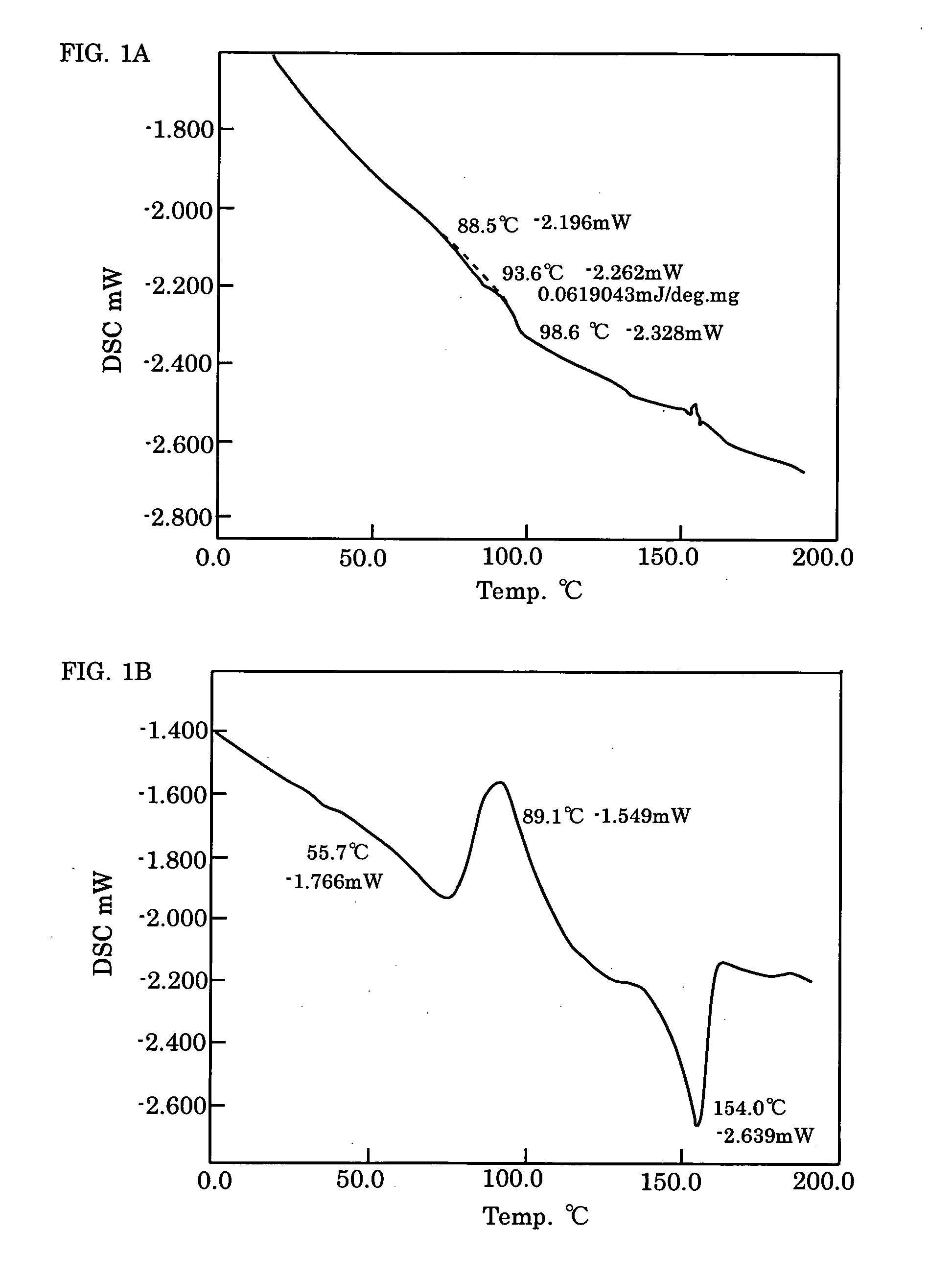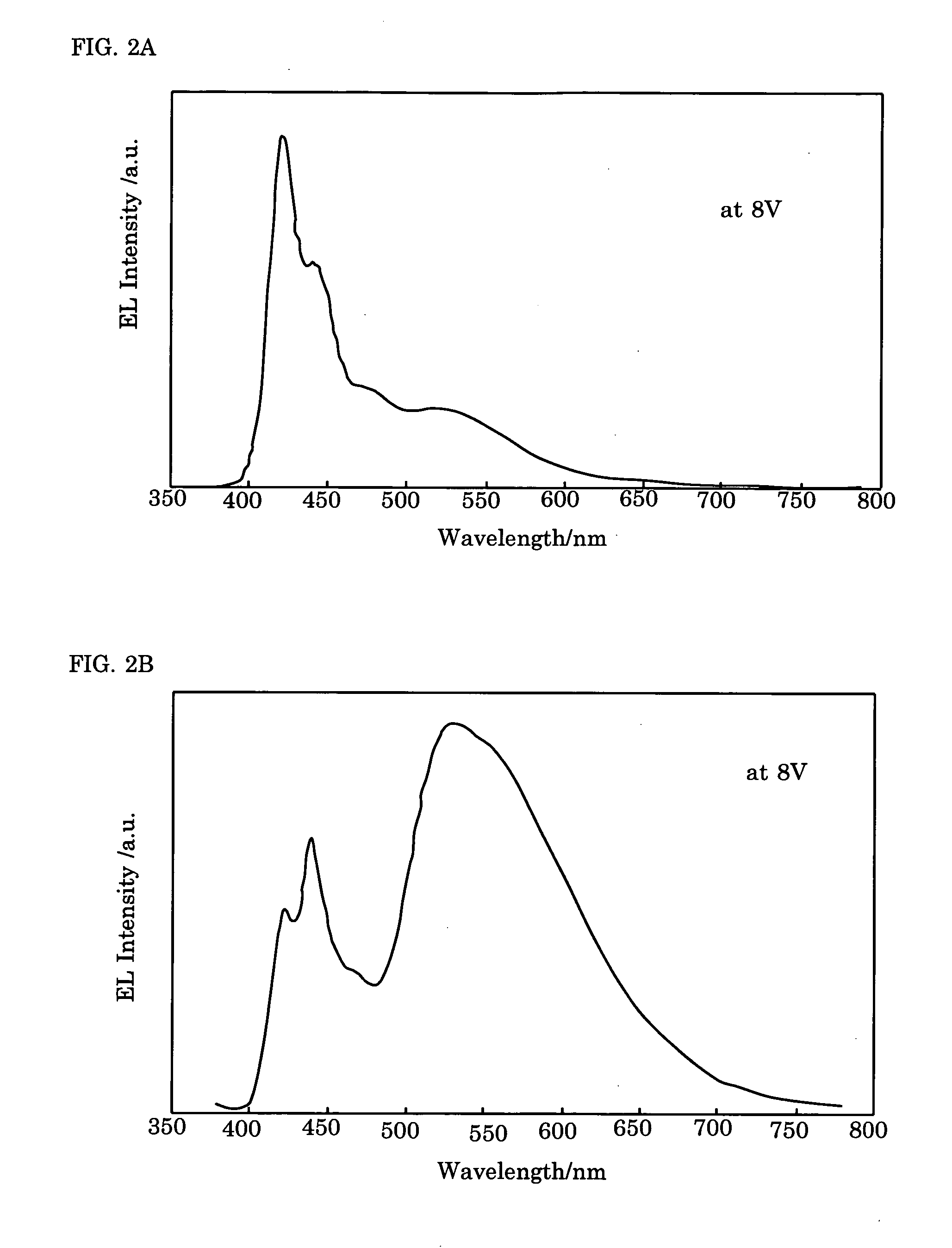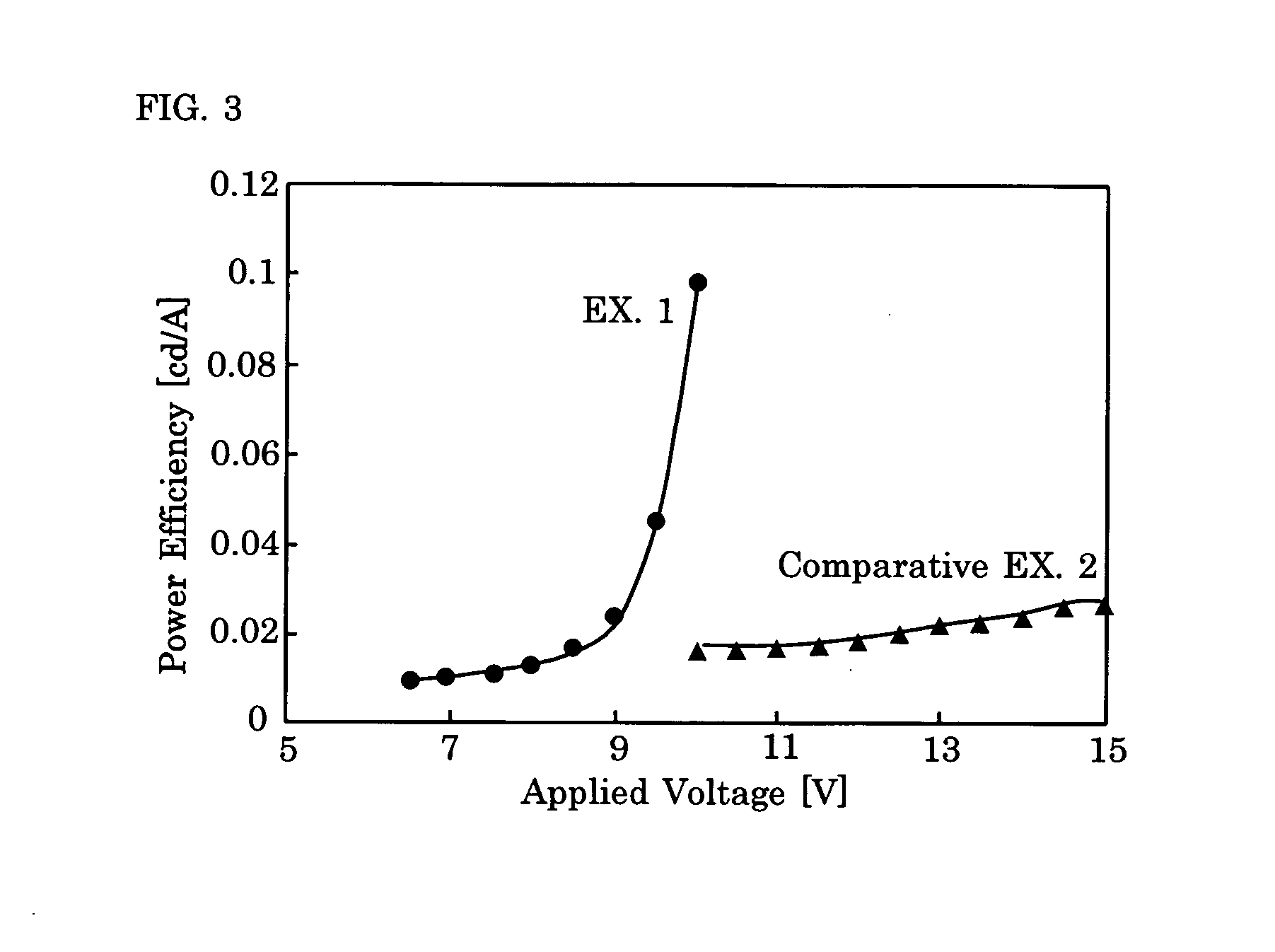Electroluminescence polymer, organic el device, and display
a technology of electroluminescence and polymer, applied in the field of electroluminescence polymer, organic el device, and display, can solve the problems of simple film formation technique, inability to form films of -conjugated polymers, and defects in the resulting films, so as to achieve stable el characteristics and less susceptible to morphological changes.
- Summary
- Abstract
- Description
- Claims
- Application Information
AI Technical Summary
Benefits of technology
Problems solved by technology
Method used
Image
Examples
reference example 1
Synthesis of 2,7-dibromo-9,9-dioctylfluorene
[0042]
[0043] 10.0 g (30.9 mmol) of 2,7-dibromofluorene, 19.7 g (102.0 mmol) of 1-bromooctane, 25 ml of dimethyl sulfoxide, 24.9 g (623 mmol) of sodium hydroxide, and 50 ml of water were placed in a 300 ml three-necked flask equipped with a reflux condenser. The mixture was heated to 80° C. Once 2,7-dibromofluorene was completely dissolved, 608 mg (2.66 mmol) of benzyltriethylammonium chloride was added and the mixture was stirred for 20 hours while heated.
[0044] Subsequently, the resulting mixture was extracted with hexane, and the extract was dried and hexane was evaporated. Excess 1-bromooctane was then evaporated at high temperature under reduced pressure. The resulting residue was purified by column chromatography (carrier=silica gel, eluent=hexane) to isolate 2,7-dibromo-9,9-dioctylfluorene as a colorless crystal (14.3 g (26.1 mmol), 84.5% yield). The resulting compound was identified by 1H-NMR and 13C-NMR.
[0045]1H-NMR (CDCl3, δ): ...
reference example 2
Synthesis of 2,7-dibromo-9,9-di(2-ethylhexyl)fluorene
[0046]
[0047] 29.3 g (90.4 mmol) of 2,7-dibromofluorene, 75 ml of dimethyl sulfoxide, 60.0 g (311 mmol) of 1-bromo-2-ethylhexane, and 150 ml of 12.5M aqueous sodium hydroxide solution were placed in a 1000 ml egg plant flask and the mixture was stirred. To this mixture, 1.20 g (5.27 mmol) of benzyltriethylammonium chloride were added. At this point, the organic phase was reddish purple. The mixture was mixed for two days at 90° C. and was extracted with diethyl ether. The extract was washed with water and dried.
[0048] The dried extract was concentrated. To the concentrate, 50 ml of dimethyl sulfoxide, 29.2 g (151 mmol) of 1-bromo-2-ethylhexane, and 100 ml of 12.5M aqueous sodium hydroxide solution were added and the mixture was stirred. 1.20 g (5.27 mmol) of benzyltriethylammonium chloride were added and the mixture was further stirred for 4 days at 90° C. At this point, the resulting organic phase was reddish purple. The mixture...
reference example 3
Synthesis of 2,2′-dibromo-1,1′-binaphthyl
[0051]
[0052] 5.67 g (19.8 mmol) of 2,2′-dihydroxy-1,1′-binaphthyl, 25.0 g (59.2 mmol) of triphenylphosphine dibromide, and 20 ml of toluene were placed in a 300 ml egg plant flask. The mixture was thoroughly stirred until uniform and the solvent was removed in a rotary evaporator. The resulting concentrate was stirred at 120° C. for 30 min under a stream of nitrogen gas. Subsequently, the mixture was heated to 260° C., stirred for 1 hour, and further stirred at 320° C. for 30 min to complete the reaction. The mixture was then allowed to cool and was extracted three times with hot toluene. The extracts were concentrated and the concentrate was loaded on a short column (carrier: silica gel, eluent: hexane / toluene (2 / 1)) to remove impurities. A proper amount of ethanol was then added to the eluate and the resulting precipitate was removed by filtration. This procedure was repeated to obtain a yellow ethanol solution.
[0053] The ethanol solution...
PUM
| Property | Measurement | Unit |
|---|---|---|
| temperature | aaaaa | aaaaa |
| temperature | aaaaa | aaaaa |
| thick | aaaaa | aaaaa |
Abstract
Description
Claims
Application Information
 Login to View More
Login to View More - R&D
- Intellectual Property
- Life Sciences
- Materials
- Tech Scout
- Unparalleled Data Quality
- Higher Quality Content
- 60% Fewer Hallucinations
Browse by: Latest US Patents, China's latest patents, Technical Efficacy Thesaurus, Application Domain, Technology Topic, Popular Technical Reports.
© 2025 PatSnap. All rights reserved.Legal|Privacy policy|Modern Slavery Act Transparency Statement|Sitemap|About US| Contact US: help@patsnap.com



